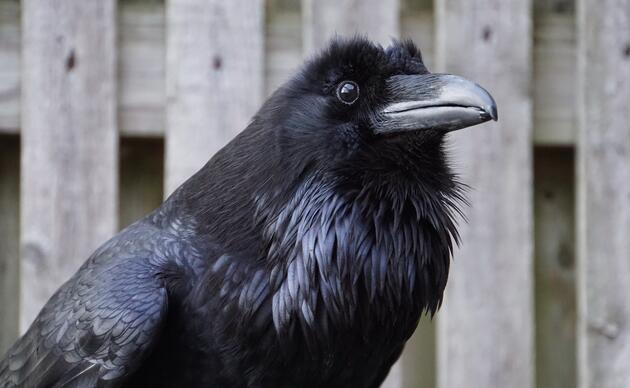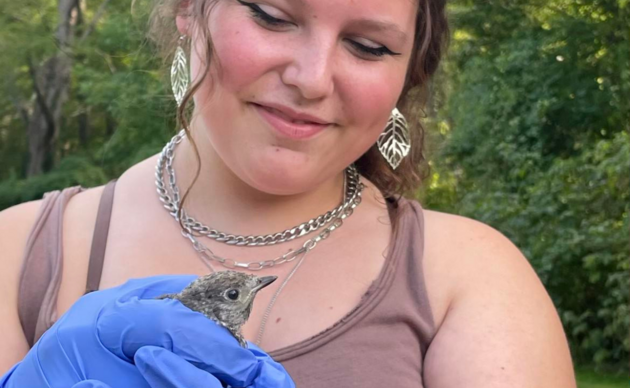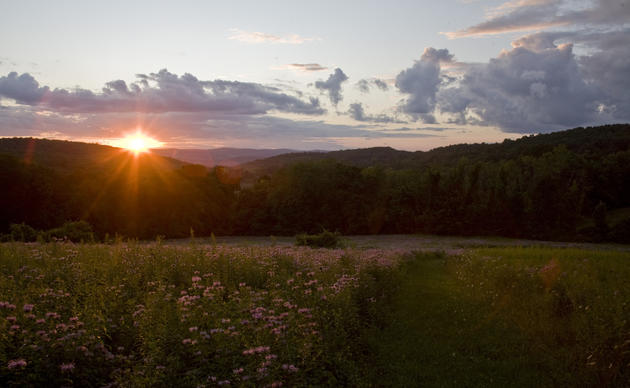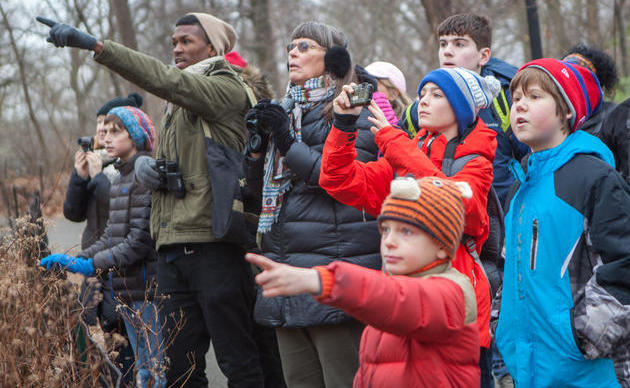Red-tailed Hawk: Mandala
Brought to Sharon Audubon Center: February 7, 2002
History: Mandala or 'Mandy' as the staff and volunteers call her, joined us at the Sharon Audubon Center as a very young hawk. She was found in Hartford, Connecticut, where she had sustained a serious injury to her right eye. Although it is not certain exactly how the injury occurred, we suspect that she was in a fight with another raptor. The puncture on her eye was about the same size as a talon and pretty consistent with an injury resulting from an encounter. The eye could not be saved and was removed. Hawks rely very heavily on sight for their survival. She could not survive in the wild with the use of only one eye and now shares an aviary with another resident Red-tailed Hawk.
Red-tailed Hawk: Twister
Brought to Sharon Audubon Center: October 11, 2003
History: Twister was found on the side of the road in Litchfield, Connecticut. After being taken to a local veterinarian hospital, the bird was treated for not only head injuries (possibly from being struck by a car), but also severe malnutrition and dehydration. Twister was transferred for care to the Sharon Audubon Center, where he slowly started to recover and eat on his own. Four months after being admitted into the rehab facility, the hawk still had a slight head tilt, but was energetic and healthy. After two separate failed attempts to release him, he was considered a non-releasable bird. Twister could fly up in the air about 30 feet, but would then quickly twist around in a circle and drop back down to the ground. His head injury would be permanent.
Twister was placed in the outside aviaries with another resident Red-tailed Hawk, while staff searched for a facility to transfer him. However, in that time, Twister and his new roommate quickly bonded, perching side by side every day and night, so Twister now has a permanent home at the Center.
Red-tailed Hawk (Buteo jamaciensis)
Average Height: 17 - 22 inches
Average Weight: 1.5 - 3 lbs
Wingspan: 3.5 - 4 feet
Lifes Span: 15 - 20 years in the wild
Description: The Red-tailed Hawk is the most common buteo in the United States. In the East, adults have a brown head and back, white underparts, and a dark, sometimes incomplete, belly band. Adults have a rufous-colored tail, seen from above or when perched. Immatures have a light brown tail with narrow dark brown bands.
Call: A loud, long, wheezy “kkeeeeeerr” is the most common call. Blue Jays imitate this call extremely well.
Range: The Red-tailed Hawk resides throughout the United States and has many color variations in different parts of the country. It is a very common resident of Connecticut and New York.
Habitat: Red-tailed Hawks prefer to live in woodlands and open country with available roost sites. They often hunt over open fields and meadows.
Diet: About 85% of Red-tails feed on rodents, but they also eat rabbits, squirrel, chickens, snakes, and frogs. The Red-tailed Hawk is at the top of the food chain, so they have few predators. Man is their biggest predator.
How you can help, right now
Learn & Explore
Where birds thrive, people prosper. Help us transform local communities into places where birds flourish. Learn what you can do to nurture wildlife, nature, and conservation in Connecticut.
Support Our Work
Through land stewardship, science, education, and advocacy, we work to preserve habitat and protect bird species that are of state, national, and global concern. Your gift makes a difference.
Join Our Family
When you become a member of Sharon Audubon Center, you are protecting critical woodlands and a natural heritage for generations to come. Help us do great things.





